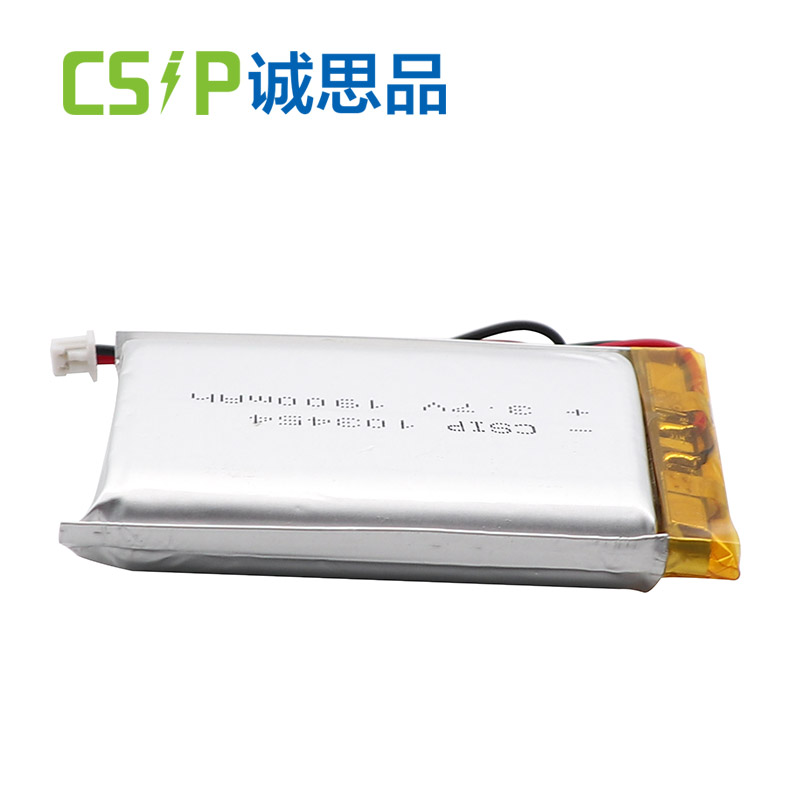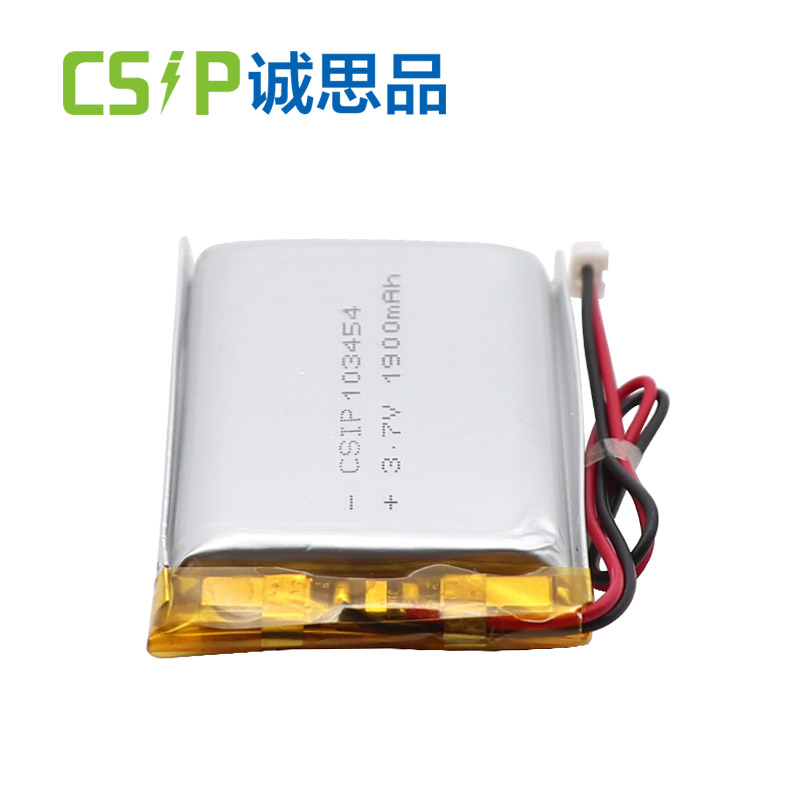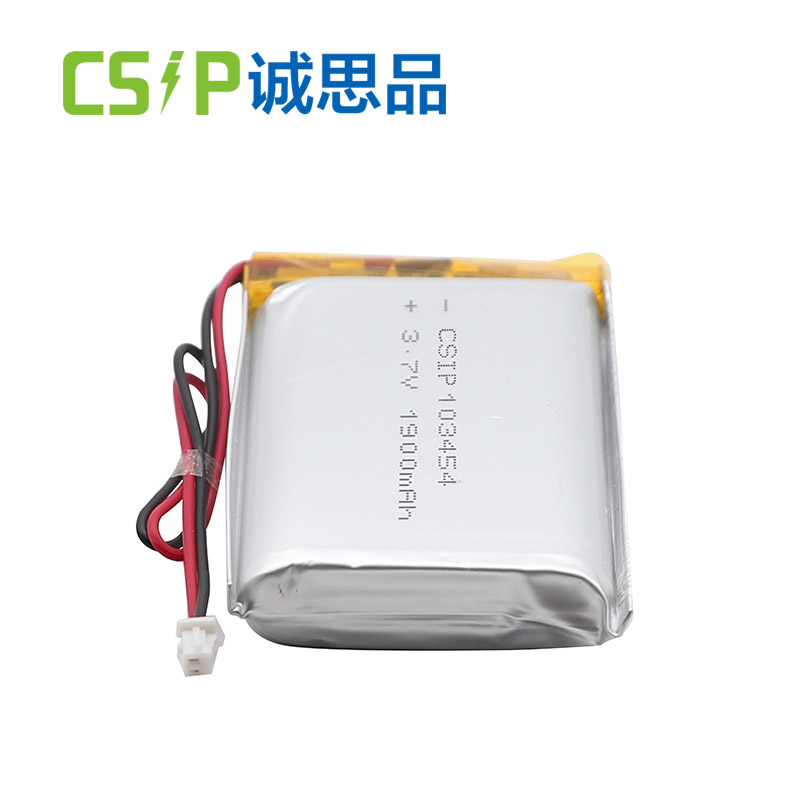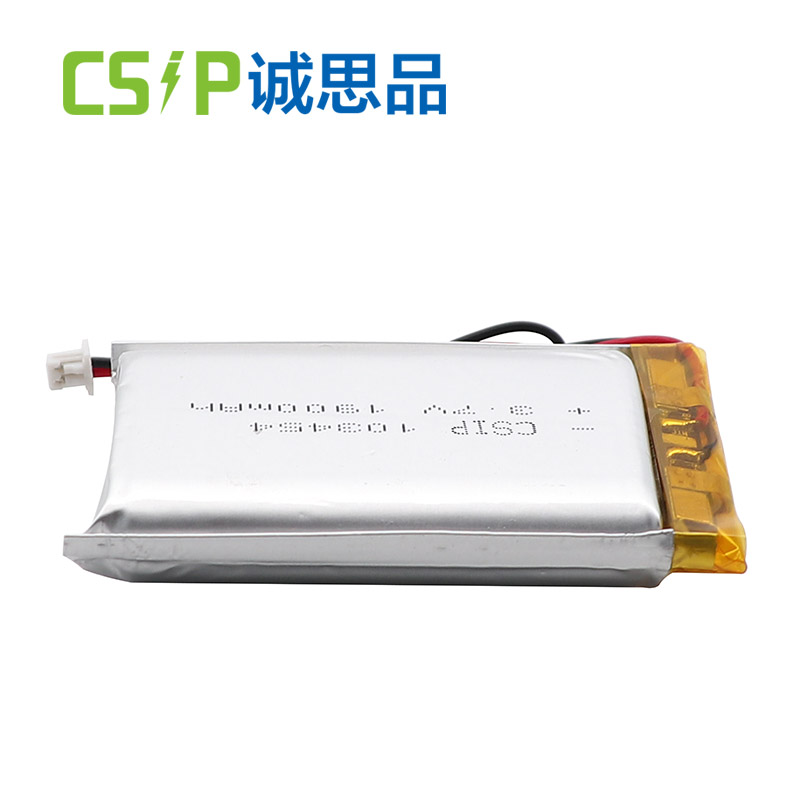-
QualityOnline Factory










3.7v 1900mAh 103454 Lithium Polymer Battery Flexible Lithium Polymer Battery CSIP





 At -40°C temperature, battery capacity can remain over 80% at 0.2C, and discharge temperature range from -40°C to 45°C.Model: 103454
At -40°C temperature, battery capacity can remain over 80% at 0.2C, and discharge temperature range from -40°C to 45°C.Model: 103454
Rated Voltage: 3.7V
Rated Capacity: 1900mAh
Charging Voltage: 3.7V
Weight: 12g
Dimension: 10*32*54mm(Max)
Impedance: ≤50mΩProdut DetailsModel: 103454 Rated Voltage(V): 3.7V Rated Capacity(mAh): 1900mAh Charging Voltage: 3.7V Weight: 12g Dimension: 10*32*54mm(Max) Impedance: ≤50mΩ Charging Current: 200mA Discharging Current: 200mA Discharging Cut-off Voltage: 3.0V Charging Temperature Range: 0~45℃ Discharging Temperature Range: -20~60℃ Storage Temperature Range: -20~60℃ Temperature Protection: 60℃±5℃ Product Features:
-
At -40°C temperature, battery capacity can remain over 80% at 0.2C, and discharge temperature range from -40°C to 45°C.






Storage
- The Li-ion polymer LI-ion battery pack should be stored in a cool, dry and well-ventilated area, and should be far from the fire and the high temperature.
- The polymer LI-ion battery should store in the product specification book stipulation temperature range, the best storage temp. is 25±5℃. The best humidity is 60±15%.
- The polymer LI-ion battery should be stored within room temperature, and charged to 40%~60% electric quantity(3.85V). In order to avoid over-discharge, we suggest charge and discharge the batteries every three months.,Then charge to40%~60%electric quantity(3.85V).
Transportation
-
Do not mix the polymer LI-ion battery products with other cargoes.
-
Do not immerse the li-ion polymer LI-ion battery products in water or allow it to get wet.
-
Do not over 7 layers staking and upside-down.
-
The highest temperature in transportation is lower than 60℃.
Use Attentions
-
To ensure proper use of the polymer LI-ion battery please read the manual carefully before using it.
Warnings
-
Do not expose to, dispose of the polymer LI-ion battery in fire.
-
Do not put the polymer LI-ion battery in a charger or equipment with wrong terminals connected.
-
Avoid shorting the polymer LI-ion battery.
-
Avoid excessive physical shock or vibration.
-
Do not disassemble or deform the polymer LI-ion battery.
-
Do not immerse in water.
-
Do not use the polymer LI-ion battery mixed with other different type or model batteries.
Charge
-
Polymer LI-ion battery must be charged in appropriate charger only.
-
Do not leave polymer LI-ion battery in charger over 24 hours.
-
Charging current: Can not surpass the biggest charging current which in this specification book stipulated.
-
Charging voltage: Does not have to surpass the highest amount which in this specification book stipulated to decide the voltage.
-
Charge temperature: The polymer LI-ion battery must carry on the charge in the ambient temperature scope which this specification book stipulated.
-
Uses constant current and constant voltage way charge. PLS connect the positive and negative terminals in right way, or the polymer LI-ion battery may be damaged.
Discharge
-
The discharging current should not surpass the biggest discharging current this specification book stipulation, The large discharge current can cause heat and lower capacity.
-
Discharge temperature: The polymer LI-ion battery discharge must carry on in the ambient temperature scope which this specification book stipulated.
-
Over-discharge: After short time over discharge, then charge immediately won’t damage the polymer LI-ion battery. But the polymer LI-ion battery will be damaged for being long time over discharged. During long-term storage, the polymer LI-ion battery may be within over-discharging condition for self discharge. To prevent the occurrence of over discharging, the polymer LI-ion battery should maintain the certain capacity when storage.
Handling of Cell
-
Soft Aluminium foil
-
Don’t strike polymer LI-ion battery with any sharp edge parts
-
Trim your nail or wear glove before taking polymer LI-ion battery
-
Clean worktable to make sure no any sharp particle
-
Sealed edge may be damaged by heat above 100°C, bend or fold sealed edge.
-
Avoid some components to contact the edge of packing foil of batteries
FAQ:
- Who are we?
- --We are a professional lithium polymer batteries supplier and provider
- What can you buy from us?
- --Soft package Lithium polymer battery,small size lithium polymer battery,High rate LiPo battery,Lithium polymer battery pack,Lithium ion battery
- How can we guarantee quality for the lithium ion battery?
- --Always a pre-production sample before mass production; Always final Inspection before shipment;So the batteries are good quality.
- What services can we provide polymer battery?
- --Accepted Payment Currency:USD; --Accepted Delivery Terms: FOB,CFR,CIF,EXW,Express Delivery;
- Accepted Payment Type: T/T,L/C,Western Union; Language Spoken:English,Chinese, Japanese, French, Korean
- Why choose us lithium battery?
- --We are professional manufacture of small size soft package lithium polymer batteries.More than 20 years of lithium battery design and research, quality management and other rich experience of Ph.D. and Master of Science , we can design, R&D and produce bat
- How about the quality of the batteries ?
- --We produce every product with good quality materials and fully test three times before shippment. What is more, our quality areapproved by CE RoHS UL & KC, PSE, ISO9001 ISO14001.
- Can i have a battery sample order?
- --Yes, we welcome sample order to test and check quality. Mixed samples are acceptable.
- Do you offer OEM service, like make our own package and logo printing?
- --Yes, we support OEM service, including customizing boxes, manual with your language and printing logo on the product etc.
- Can I put order with PayPal for a fast shipment the battery?
- --Sure, we support both online orders and Paypal, T/T, Western Union offline orders. Please contact us for details.
- What is the return policy for the battery?
- --If there is a quality problem with the battery, we can pay for the return shipping and return it.
- What are the shipping options for polymer batteries?
- --We usually ship by DHL(3-5days), UPS(4-6days), Fedex(4-6days), TNT(4-6days), Air(7-10days), or by sea(25-30days) at your request.
Related SuggestionGet A Free Consultation
-
4th Floor, Building, No. 168, Changshan Industrial Park, Pingdi Street, Pingdi Street, Longgang District, Shenzhen
- Produts
- Cylindrical Li-polymer battery
- Ultra thin lithium battery
- Ultra narrow lithium battery
- High voltage fast charging lithium battery
- High rate lithium polymer battery
- Low temperature lithium polymer battery
- More+
- Links
- Magic Lamp
- CSIP
- Get a Free Consultation

 Home
Home











